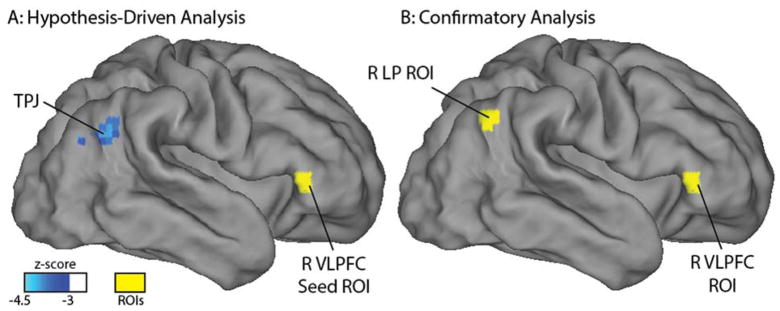Figure 1.
Both hypothesis-driven and confirmatory analyses indicate that ventral attention network resting state functional connectivity evident soon after birth birth is related to behavioral inhibition at age 2 years. Panel A depicts a whole-brain regression relating functional connectivity soon after birth between a right ventrolateral prefrontal cortex region-of-interest (in yellow) and the rest of the brain to behavioral inhibition at age 2 years. The regression controls for sex, social risk, post-processing residual motion, the interaction between sex and behavioral inhibition, and the interaction between social risk and behavioral inhibition; and includes stringent whole-brain multiple comparisons correction. Panel B depicts the two regions from the confirmatory analysis in which functional connectivity at term equivalent was most strongly related to behavioral inhibition at age 2 years (as determined by the highest standardized beta weight), controlling for the same factors as in the hypothesis-driven analysis. The two analyses converge on a similar result – functional connectivity between the right ventrolateral prefrontal cortex and a region near the right temporal parietal junction -- right lateral parietal cortex is related to age 2 years behavioral inhibition. Note that this right temporal parietal junction location overlaps with the seed map of the right ventrolateral prefrontal cortex (see Supplementary Figure 1A), suggesting that this location is within the ventral attention network. TPJ: temporal parietal junction; R LP: right lateral parietal; R VLPFC: right ventrolateral prefrontal cortex; ROI: region-of-interest.

